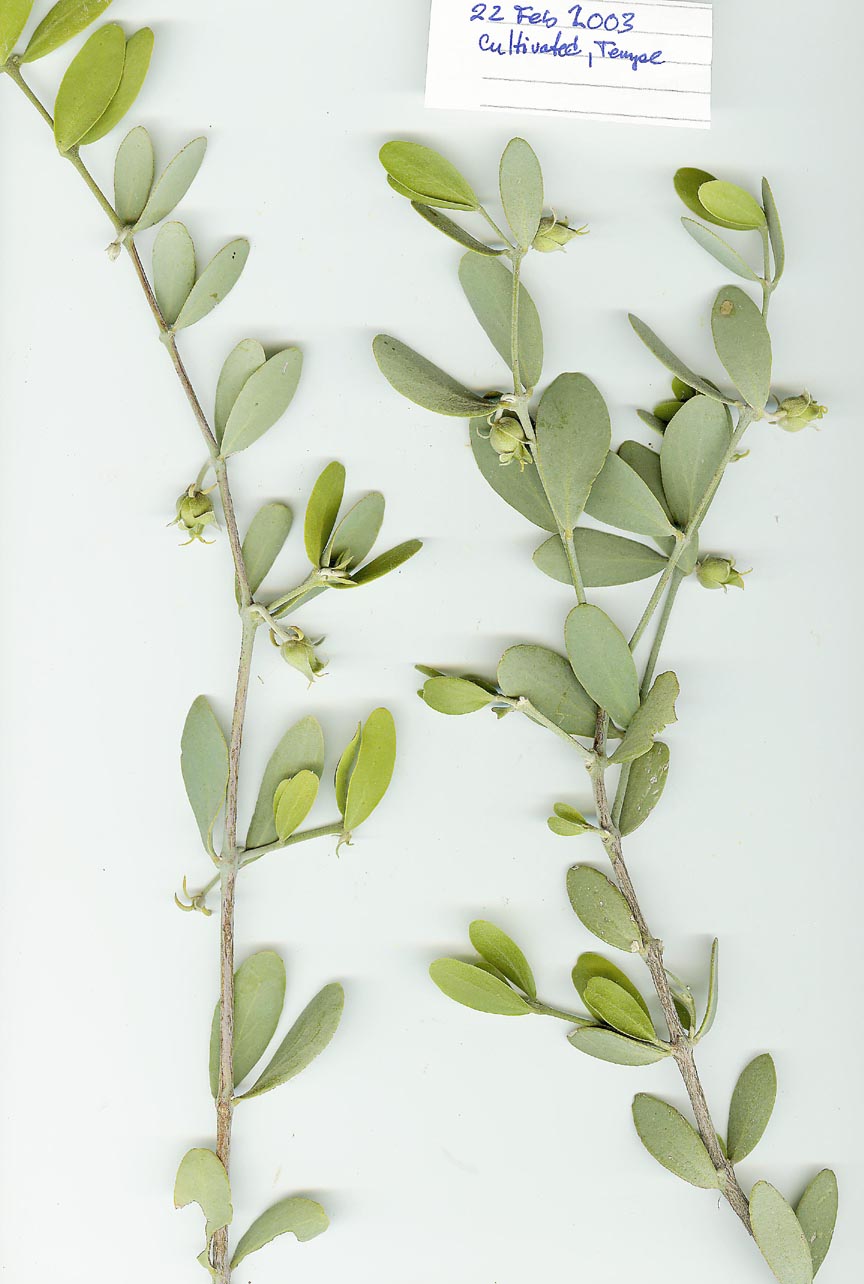Simmondsia
|
Family: Simmondsiaceae |
PISTILLATE INFLORESCENCES: usually of solitary flowers on recurved bracteate peduncles, these 2-5 mm long; flowers rarely perfect, actinomorphic, the sepals usually 5, pubescent, overlapping, 8-12 mm long but enlarging to 20 mm long in fruit; ovary superior, glabrous, 3(-4)-locular; styles 3; ovules 1 per locule, some usually aborting. PLANTS: Dioecious shrubs, wind-pollinated, rigidly much-branched, 1-2(-4) m tall, bearing simple, appressed, multicellular trichomes, these especially dense on newer growth. STEMS: greenish tan, aging reddish brown to gray, the branches arching upward, the bark smooth; internodes 1.5-4 cm long. LEAVES: opposite, the pairs erect-ascending, dull green, simple, entire, coriaceous, evergreen, obscurely pinnately veined, estipulate, elliptic to lanceolate or oblanceolate to oblong-ovate, 2-4(-6) cm long, 1-2 (-4) cm wide; apices acute to rounded; bases obtuse to acute or attenuate. STAMINATE INFLORESCENCES: dense bracteate heads, on peduncules 2-30 mm long, pendant from leafaxils; flowers actinomorphic, with 4-6 distinct pubescent sepals, these mostly equal, 2-5 mm long, 1-3 mm wide; petals 0; stamens 8-12(-16), free, 2-4 mm long. FRUIT: a coriaceous capsule, acorn-like, slightly 3-angled, 13-25 mm long, loculicidal. SEEDS: 1(-3), brown to black, puberulent, 13-17 mm long. NOTES: 1 monotypic genus; arid regions of southwestern U. S. and northwestern Mex. (for F. W. Simmonds, English naturalist). REFERENCES: Rebman, Jon P. 1995. Simmondsiaceae. J. Ariz. - Nev. Sci. 29(l): 63. |

